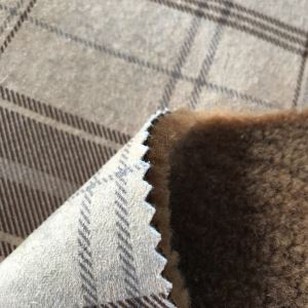How To Distinguish The Warp And Weft Of Fabrics?
First of all, a prerequisite for distinguishing the warp and weft of fabrics is that the fabric is woven. Woven fabrics are made of two or more groups of mutually perpendicular yarns, interwoven at a 90-degree angle. Only woven fabrics have warp and weft.
If the fabric you get has a selvedge, it is very simple. The direction parallel to the selvedge is the warp, and the direction perpendicular to the selvedge is the weft.
The following are some experience summaries. Through the following points, you can correctly distinguish the warp and weft of woven fabrics!
1. If the twist of the single yarn fabric is different, the Z twist direction is the warp direction, and the S twist direction is the weft direction.
2. If the warp and weft yarn count, twist direction, and twist degree of the fabric are not much different, the yarn with uniform dryness and better gloss is the warp direction.
3. If the twist degree of the fabric is different, most of the twist degrees are warp, and the twist degree is small.
4. For towel fabrics, the yarn direction of the terry is the warp direction, and the yarn direction of the non-terry is the weft direction.
5. If the fabric to be identified has a selvedge, the yarn direction parallel to the selvedge is the warp direction, and the other direction is the weft direction.
6. The direction of the warp is the direction of the sizing, and the direction of the weft is the direction of the non-sizing.
7. Generally, the direction of the fabric with high density is the warp direction, and the direction of the low density is the weft direction, except for corduroy fabrics, which are double-weft fabrics with a greater weft density than the warp density.
8. For fabrics with obvious reed marks, the direction of the reed marks is the warp direction.
9. For half-thread fabrics, the direction of the ply is usually the warp direction, and the direction of the single yarn is the weft direction.
10. For striped fabrics, the direction of the stripes is usually the warp direction.
11. If the fabric has a system of yarns with multiple different counts, this direction is the warp direction.
12. For leno fabrics, the direction of the twisted yarn is the warp direction, and the direction of the untwisted yarn is the weft direction.
13. In the interwoven fabrics of different raw materials, generally cotton-wool or cotton-linen interwoven fabrics, cotton is the warp yarn; in wool-silk interwoven fabrics, silk is the warp yarn; in wool-silk-cotton interwoven fabrics, silk and cotton are the warp yarns; in natural silk and spun silk interwoven fabrics, natural yarn is the warp yarn; in natural silk and rayon interwoven fabrics, natural silk is the warp yarn. As fabrics have a wide range of uses and varieties, and the continuous advancement of weaving technology, the requirements for fabric raw materials and organizational structures are also diverse. Therefore, when making judgments, it is also necessary to determine according to the specific conditions of the fabrics.






